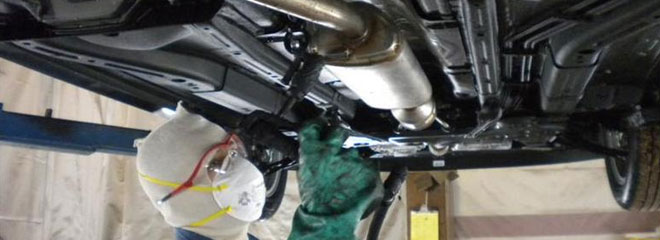Your car is often exposed to corrosive substances wherever you live. They include Acid rain, salt, and other things on the road which can seriously affect the underside. Rustproofing and undercoating can save it from corrosion and rust. Undercoating is a protective layer that is applied to the underside of a car where the parts are not coated with the protective layer of paint, making it likelier to get damaged by rust. Car undercoating is not necessarily added to the painting. Some people get satisfied with regular inspection and good waxing. But since the underlayer is more vulnerable than any other part of the car, many car owners choose to have them as an extra layer of protection from rust and damage.
The perfect time to have a car undercoating is when it is still new. You can be well assured that your car is protected right from the first drive. That doesn’t mean used cars cannot have undercoating as the car was already exposed to dust, chemicals, and grime from the road. Coating the underside can protect it from further exposure and damage.
The advantages of having a car undercoated are given here,
- – You do not have to worry constantly about corroded parts and drive freely on salty roads without any dread.
- – The weight of the car is increased. Though it is usually viewed as a disadvantage, it can also bring more stability to the car.
- – In addition to the protection it offers, the undercoating can also dampen the sounds of the road and engine. This makes the passenger compartment of the car quieter and more peaceful.
Different methods to undercoat your car:
There are many options when it comes to undercoating your car. The common methods are given below,
- A new method to prevent the corrosion is with the help of an electronic device which passes weak electric current. Car dealers can provide you with this protection as an add-on service or it can be installed using other sources.
- Spraying a Tar based substance over the under body of the vehicle. After being coated it acts as a layer and prevents moisture, salt and other corrosive substances to get through. If improperly done, the coating may crack or let in moisture.
- A drip-less oil spray is a wax-like substance that can cover the entire body of the car. The main disadvantage in this method is that it is required to drill holes at some specific points of the car to ensure that it covers all the required areas.
- A drip oil spray is more watery and it can reach more areas than the drip less oil spray. It is most commonly used. It still needs drilling.
If you intend to do.

